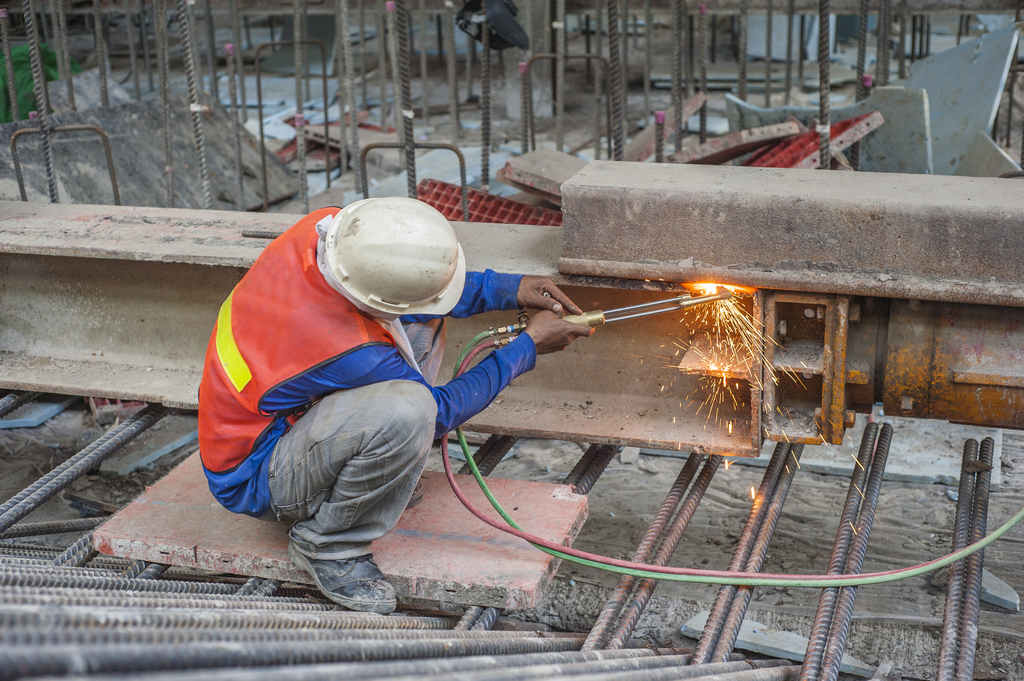Unions offer a safety and health advantage in the construction industry. According to a survey commissioned by the Center for Construction Research and Training (CPWR), construction firms that employ at least some union workers are more likely to perform safety best practices and undergo OSHA training than those without any union employees.
 Image Source: Shutterstock
Image Source: Shutterstock Center for Construction Research and Training (CPWR) Study – Unions and Safety
Ninety of the 334 firms that participated in the study employed only union workers, while 109 had both union and nonunion employees, and 135 had only nonunion workers. The research shows the union advantage when it comes to worker safety and health. The results speak for themselves:
- Union contractors were 20% more likely to engage in prevention through design practices, which involve anticipating and designing hazards out of work methods, materials and tools before workers encounter them.
- Almost 80% of union contractors said they conduct hazard analysis before projects begin; only 56% of non-union contractors said the same.
- Union contractors designated competent persons more often (76% vs. 62%), investigated near misses and other incidents more often (67% vs. 50%) and implemented site-specific safety and health plans more often (87% vs. 69%).
- 63.4% of union firms require jobsite employees to undergo OSHA 10-hour training, compared with 50% of nonunion firms.
- 71.7% of union firms require supervisors to undergo OSHA 30-hour training, compared with 54.5% of nonunion firms.
CPWR is an organization dedicated to reducing occupational injuries, illnesses and fatalities in the construction industry. Through their research, training, and service programs, they serve the industry in cooperation with key federal and construction industry partners nationwide.
Source: CPWR Quarterly – May 2018 – Union Effect on Safety Management and Safety Culture in the Construction Industry [PDF]
Employee’s Right to a Safe Workplace
Employees have the right to a safe workplace. The Occupational Safety and Health Act of 1970 (OSH Act) was passed to prevent workers from being killed or otherwise harmed at work. The law requires employers to provide their employees with working conditions that are free of known dangers. The OSH Act created the Occupational Safety and Health Administration (OSHA), which sets and enforces protective workplace safety and health standards. OSHA also provides information, training and assistance to employers and workers.
- Required by some states and companies in order to start employment.
- DOL Plastic Card Shipped Within 2 Weeks.
- Reg. Price: 10hr: $89 - 30hr: $189
- Enter Promo Code "osha15off" at Checkout
Why is Health and Safety Training Important?
Aside from the obvious benefit of keeping employees safe, healthy, and productive – along with meeting the OSHA workplace safety standards – health and safety training makes financial sense for employers because:
- Every dollar spent on proper health and safety programs can save a business $4 to $6! [1]
- With less work-related illnesses and injuries, employers see significant savings on absenteeism and workers’ compensation insurance. [2]
- According to one study by California’s Division of Occupational Safety and Health (Cal/OSHA), businesses inspected by OSHA “saved an estimated $355,000 in injury claims and compensation paid for lost work” in the four years after inspections. [3]
- Businesses that meet OSHA’s standards avoid inspection violations and possible fines.
 Image Source: Shutterstock
Image Source: Shutterstock Employer Reasons for a Workplace Health and Safety Program
Here are a few reasons why you should give strong consideration to a health and safety training program:
- All Workplaces Have an Element of Risk – From manually handling packages to driving heavy machinery, there are different levels of exposure to risk and illness.
- Increases Staff Productivity – Employees in many ways are like customers, treat them well and they stay, treat them well and they feel valued and treat your customers well in turn.
- Reduces Frequency of Compensation Claim or Lawsuit – It only takes one serious injury to bring a worker’s compensation claim or lawsuit. Safety training can diminish the frequency.
- Enhances Company Image Positively – Workers want to know what they stand to gain from a company in regards their benefits and salaries, but they also want to know your plan for their health and safety.
- Reduces Costs – Apart from the cost that will be accrued by litigation costs, fines and compensation payments, actual injuries and incidents can rack up direct costs in, medical expenses such as ambulance, hospital, and doctors’ fees, medication, and rehabilitation. There could even be increases in insurance premiums as a result. Likewise, indirect costs could include disrupted work schedules, lost productivity, clean-up and repair, hiring and training replacement workers, bad publicity, time spent on accident investigation and claims management.
As an employer, don’t think health and safety training is expensive and wasteful. Health and safety training educates your workers to work safely and motivates them to be more productive… which is a profit in itself.
References
[1] https://www.osha.gov/Publications/OSHA3163/osha3163.html
[2] https://www.osha.gov/Publications/safety-health-addvalue.html
[3] https://www.osha.gov/dcsp/products/topics/businesscase/
